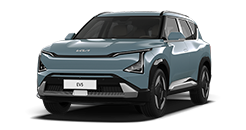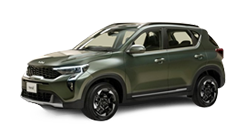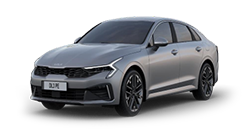open menu
- Home>
- Discover kia>
- ASK>
- Are self-driving cars safe?
Are self-driving cars safe?
“Autonomous vehicles can be trained to be safer than human-controlled cars. With sensors and cameras, they can enhance the safety of a driver as well as pedestrians by eliminating human error.”

Many experts say that self-driving cars can be trained to be safer than human drivers. With the sensors and cameras monitoring and guiding, these cars can not only sense their environment but also can anticipate what’s coming up ahead, which humans are not capable of. They may one day make the world a safer place by eliminating human error and reducing the number of car crashes.
But, we should go through a long process before self-driving cars reach end consumers. We need a lot of time for testing and for people to become comfortable with the technology.
There are several ADAS features available today. One of them is adaptive cruise control, a system to maintain a safe distance between your car and the car ahead of you. If the car in front of you slows down, so will your vehicle. If the vehicle speeds up, so will your car, up to the target speed you initially selected. The parking assist system will provide you with monitoring and alerts if you are getting too close to other vehicles while parking. While blind-spot detection is also being installed in the vehicles. This system detects objects in your blind spot and you get the alerts if a vehicle or object that you can’t see is in your path, potentially preventing an accident. Emergency braking also detects objects that can abruptly cross your path and the system will apply the brakes or steer if necessary to prevent an accident or mitigate the risks. Also, lane keeping assistance detects the lane and makes sure that your vehicle is within the lane when driving. The capabilities of ADAS are endless and it’s well on the way to becoming fully autonomous cars.
There are passive safety features such as seatbelt and airbags to mitigate the consequences of a collision, but the most effective way to improve its safety would be to prevent the collision altogether. Even though self-driving technology is in its early stages, it has the potential to remove human error from the equation, thus reducing accidents and fatalities.
The driver assistance system continues to gain in popularity as its benefits have been studied and communicated widely: according to research, the ADAS system including emergency braking, lane keeping assistance, and blind-spot warning system, if all vehicles had been equipped with the system, it would have had prevented 40% of all passenger-vehicle crashes.
The automotive industry is now envisioning a world where injuries and accidents can be completely prevented. So, while self-driving cars present a world of promises, what’s the best way to reach their full value?
Then, what should the industry and government leaders do in terms of laws and regulations? Safety is the number one priority and they would have to thoroughly consider, test, and study the safety implications of self-driving cars. Also, there are many decisions to be made regarding how the technology benefits people and ways to protect the marginalized sectors of self-driving cars.
Just like any technologies that are introduced to society, self-driving cars can be introduced in a limited manner at first. We might start with small cities, work out all the possible outcomes and details, then expand from there gradually. The most important thing is to prove that they work reliably. That is why the industry, politicians, and experts need to take a long-term approach in assessing the technology rather than rushing to a solution.
















